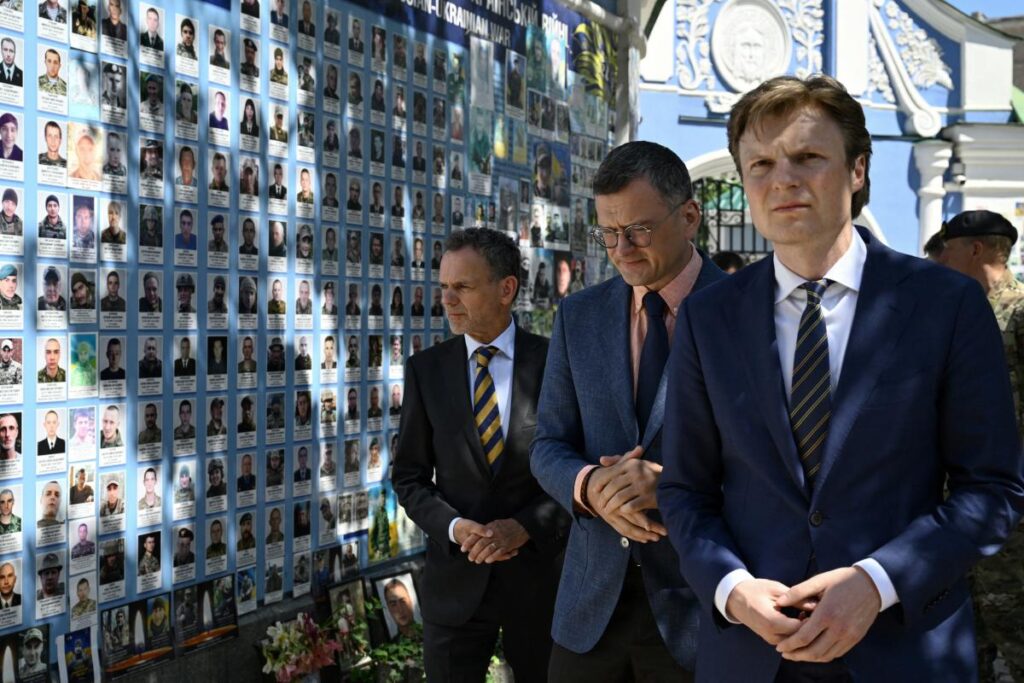The Netherlands faces challenges in executing its planned €750 million (US$790 million) military aid to Ukraine this year, as outlined by Dutch Defense Minister Ruben Brekelmans. The shift in military aid from stockpiles to newly produced equipment has complicated the situation, with the international defense industry struggling to meet increased demand not only from Ukraine but also from various countries looking to bolster their own military capabilities amid ongoing global tensions. Brekelmans explained in his correspondence to the Dutch parliament that such robust demand has adversely affected delivery schedules, leading the Netherlands to ultimately allocate the unspent funds to the 2025 defense budget while ensuring that their intended purpose—to support Ukraine—remains unchanged.
This situation is not unique to the Netherlands; the Ukrainian defense sector is reportedly encountering similar challenges due to the constrained global market. Although the Netherlands is actively pursuing investments in Ukrainian defense firms to enhance their capacity, many local entities lack sufficient equipment that can be delivered in the immediate term. Brekelmans noted that the overall commitment from the Netherlands has been substantial, with €10.4 billion pledged in military support to Ukraine. As of now, €9.5 billion of that has been realized, legally committed, or is in negotiation stages, while plans for the remaining €970 million are primarily directed toward addressing urgent needs in the near future, including procurement from the Ukrainian defense industry.
While specifics about new deliveries may be delayed, Brekelmans reiterated that these developments have not derailed the Dutch government’s coalition’s commitment to support Ukraine politically, militarily, and financially. European countries, facing heightened threats from Russia, have been reevaluating their defense strategies, leading to a significant increase in military budgets. A report from the European Defence Agency projects a rise in EU countries’ spending on military equipment from €61 billion in 2023 to €90 billion this year, signaling a concerted effort across the region to address capability gaps and prepare for potential high-intensity conflicts.
Additionally, the surge in demand for military hardware among EU nations is being driven by the necessity to replenish their stockpiles after providing substantial military aid to Ukraine. Notable European defense manufacturers such as KNDS, Rheinmetall, Saab, and MBDA have reported record order volumes in response to this urgent market need. The broader implications of this trend suggest that the defense landscape in Europe is undergoing significant transformation, as nations bolster their military infrastructures with the lessons learned from current events.
The support provided by the Netherlands particularly includes critical military assets, including 24 F-16 fighters and a Patriot air defense system, as well as main battle tanks such as 14 Leopard 2A4s, hundreds of YPR tracked armored personnel carriers, and two mine-hunting vessels. These assets are designed not only to aid Ukraine in its defense against Russian aggression but also to enhance the overall military capabilities of the Dutch forces, reflecting a dual approach to national and international security.
Looking ahead, it remains crucial for the Dutch government and its partners to navigate the tight global defense market effectively to fulfill their commitments to Ukraine. The transfer of unspent military aid to future budgets signals resilience and a long-term commitment to Ukrainian support despite immediate challenges. With numerous EU nations simultaneously increasing their defense budgets and prioritizing military readiness, the strategic alignment of resources and continued collaboration among allies will be vital in addressing both current and future threats in the region.

